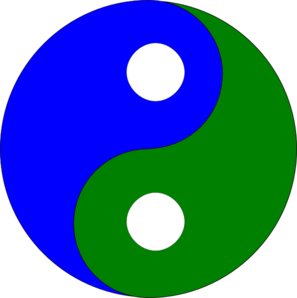
“Destined to Cooperateâ€: Japan-ROK Naval Cooperation and its Implications for U.S. Strategic Interests in Northeast Asia
March 4, 2014
5 Faulty Assumptions About Taiwan
March 10, 2014By Lauren Duffy |
Last month we witnessed unprecedented government-to-government talks between leaders of the Taiwan Affairs Office (TAO) and the Mainland Affairs Council (MAC) in Nanjing. More recently, the head of Beijing’s Association for Relations Across the Taiwan Straits (ARATS), Chen Deming, recognized Taiwan’s same MAC Minister Wang, as ‘Minister,’ an indication of the Republic of China’s (ROC; Taiwan) political legitimacy. Concurrently, speculation continues to circulate around the possibility of a summit between Taiwan’s President Ma Ying-jeou and People’s Republic of China (PRC; China) leader Xi Jinping.
As cross-Strait relations begin to accelerate, a commonly supported China policy is paramount to ensuring constructive ROC-PRC negotiations. Taiwan’s top political parties, the Democratic Progressive Party (DPP) and the Kuomintang (KMT) are steadily working to achieve this objective. But while some progress has been made to encourage dialogue, internal divisions and policy ambiguities remain, further delaying consensus on how the nation should move forward.
Within the DPP, prospects for internal agreement are muddled by persistent divisions as policymakers continue to define and redefine Taiwan’s identity in terms of the ROC’s governing authority and how that relates to evolving relations with the mainland. In particular, Former Party Chair Tsai Ing-wen and Former Party Premier Frank Hsieh differ substantially on what Taiwan’s identity should look like. Tsai promotes a “The ROC is Taiwan, Taiwan is the ROCâ€Â strategy, an attempt to argue that Taiwan is not ruled by a non-native power. Hsieh however, a primary critic of the DPP’s recent China Policy Review, promotes a “two constitutions, different interpretationsâ€Â approach, in which the respective constitutions of the PRC and ROC govern different territories and share a unique relationship. According to recent polling, Hsieh’s position is gaining momentum and has been viewed by Washington and Beijing as tolerable and acceptable; however it failed to make it into the DPP’s China Policy Review consequent of its close similarities to the KMT’s 1992 Consensus.
Similarly, the KMT faces its own inconsistencies in policy and rhetoric. More specifically, last year Honorary KMT Chairman Lien Chan, who regularly visits the mainland, sparked debate in both the pan-blue and pan-green camps due to his comments on cross-Strait relations. Lien expressed, in a meeting with PRC leader Xi Jinping, his ambitions for “one China, cross-strait peace, mutually beneficial integration and the rejuvenation of the Chinese nation.†While he also urged Beijing to recognize the ROC’s existence, many pro-independence DPP members were outraged and President Ma quickly pointed out that the comments that were made solely reflected Lien’s personal perspective. Likewise, prior to and following MAC Minister Wang Yu-chi’s meeting in Nanjing in early 2014, politicians expressed wariness over the terminology Wang might use and requested a briefing upon his return. Subsequently, while varying opinions on how relations should progress help to fuel healthy debate, in practice, their potential in sending mixed messages to Beijing could pose a serious dilemma in maintaining consistency and clarity in negotiations. Thus, in cases especially like Lien’s, a foundational understanding and agreement on Taiwan’s China objectives would help to enhance relations without exasperating them.
Possibilities for compromise still exist. In January, the DPP published its China Policy Review, which outlined areas for enhancing and restraining relations to encourage engagement with China while stressing the need to protect Taiwan’s autonomy and technological edge. In particular, the DPP emphasized the degree and variety of debate that took place over the course of 9 meetings and public forums, and included 629 participants across the political spectrum. The party concluded that the meetings were best characterized as “the most comprehensive and thorough discussion of cross-Strait relations in Taiwan’s history.†Although the policy was plagued by many of the aforementioned discrepancies in the DPP’s cross-Strait policy, the policy review serves as a valuable benchmark for the party in facilitating dialogue to eventually reach a consensus on Taiwan’s China policy.
Thus, in an effort to bridge gaps and to establish a clear and coherent policy, serious consideration of the DPP’s recent efforts to produce a China policy, as well as looking to the agreements made at the 1996 National Development Conference, a multiparty convention that addressed Taiwan’s democratization and the future of cross-Strait relations, might serve as a healthy foundation for further discussion. Together, these two strategies would assist in bringing new ideas to the table, generating debate, and would cover a diverse and well-represented demographic of professionals, policy makers, and academics. The efforts that contributed to Taiwan’s present democratic system are a not so distant memory. Therefore, utilizing a similar model, one culminating a more contemporary structure of forums, would revitalize the conversation across party lines at a more informal level. Understandably, Taiwan’s Legislative Yuan is the nation’s primary policy body. However, successful creation of a truly unified China Policy demands that deliberations be expanded to an even wider audience.
Ultimately, as the ROC continues down this road of engagement with the PRC, many hurdles will be met, characterized by fierce debates about the country’s economy, security, and in particular, its international legitimacy. As such, it is crucial that the nation’s key political parties establish common ground for discussing these issues, and attain solidarity in their policies toward Beijing. Doing so will not only help the Taiwanese people, but also those in China and the United States, to understand Taiwan’s core objectives and how to best engage one another for the foreseeable future.
Lauren Duffy is a Research Intern at the Project 2049 Institute.




